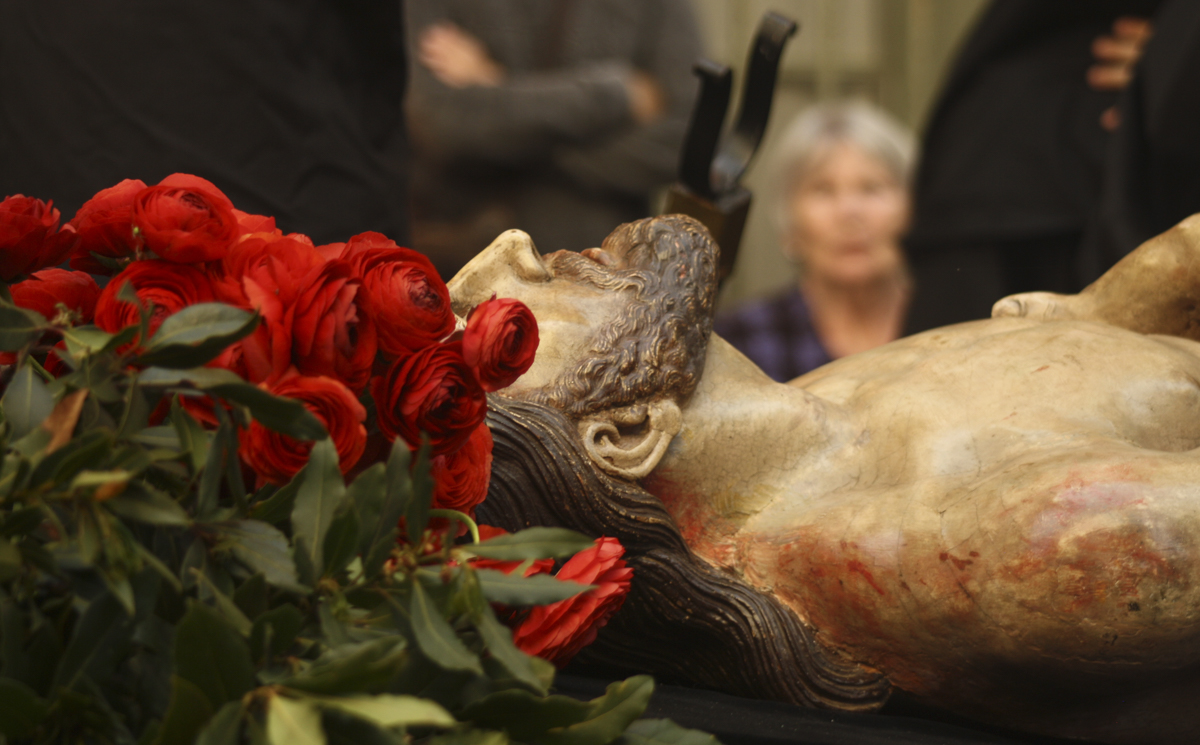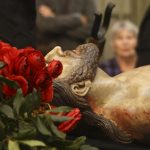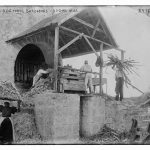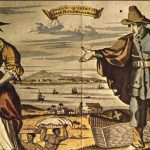STORY AND PHOTOS BY ELEANOR MARTINDALE
Perpignan, France’s southernmost city, does not always feel very French. In fact, the Roussillon area of France has changed hands numerous times over the centuries—ping-ponging between the dukes of Barcelona, the kings of Mallorca, and the rulers of Spain and France before finally being given to Louis XIV as part of the Treaty of the Pyrenees in 1659.
The medieval center of Perpignan, then, often feels far more Spanish than French, and its traditions are steeped in Catalan culture. One of these traditions is the Good Friday Procession, known in French as the Procession de la Sanch (“sanch,” pronounced “sank,” is the Catalan word for blood).
The Brotherhood of the Blood (la Confrérie de la Sanch) is a religious and charitable organization that has existed in Perpignan since 1416. Its founding mission was to commemorate the Passion of Christ, which is the short, final period of the life of Jesus Christ; to assist prisoners who had been condemned to death; and to preach penance and help sinners prepare for their final judgement and salvation. As part of this mission, members of the brotherhood, known as penitents, would accompany prisoners condemned to death on their final walk through the city to the scaffold. Both penitents and prisoners wore identical hooded cloaks, thus protecting the prisoners’ anonymity and guarding them against acts of humiliation or revenge from the baying crowds.
Although this mission has changed somewhat over the centuries, members of the Confrérie de la Sanch today still provide support for offenders, including regular prison visits. And although the hooded march through the city thankfully no longer ends at the scaffold, the Good Friday Procession remains a dramatic and solemn affair—one that is quite unsettling to watch. While such processions are common across Spain, in France they are unique to French Catalonia, providing another cultural tie that has the region often feeling more Spanish than French.
Editor’s Note: We are aware that for many readers, particularly those from the United States, the costumes in these images—costumes whose origins predate by centuries the colonizing of what would become the United States—are disturbing in their resemblance to the hoods and robes associated with the post-Civil War Ku Klux Klan. We invite you to visit this Smithsonian article that delves into the history of costumes that allowed anonymity for the KKK as it terrorized American Black citizens, a very different reason for anonymity than that of the Catalan penitents who walked alongside condemned prisoners to protect them.

For three hours, penitents wearing hooded cloaks (called caparutxes) march through the medieval center of Perpignan. The procession begins at the Church of St. Jacques, where the Brotherhood was first formed in 1416 by the Dominican Vincent Ferrier. He gathered many followers due to his fervent sermons on the Passion, illustrating how penitence was the only way to save the world torn apart by wars and religious divides.
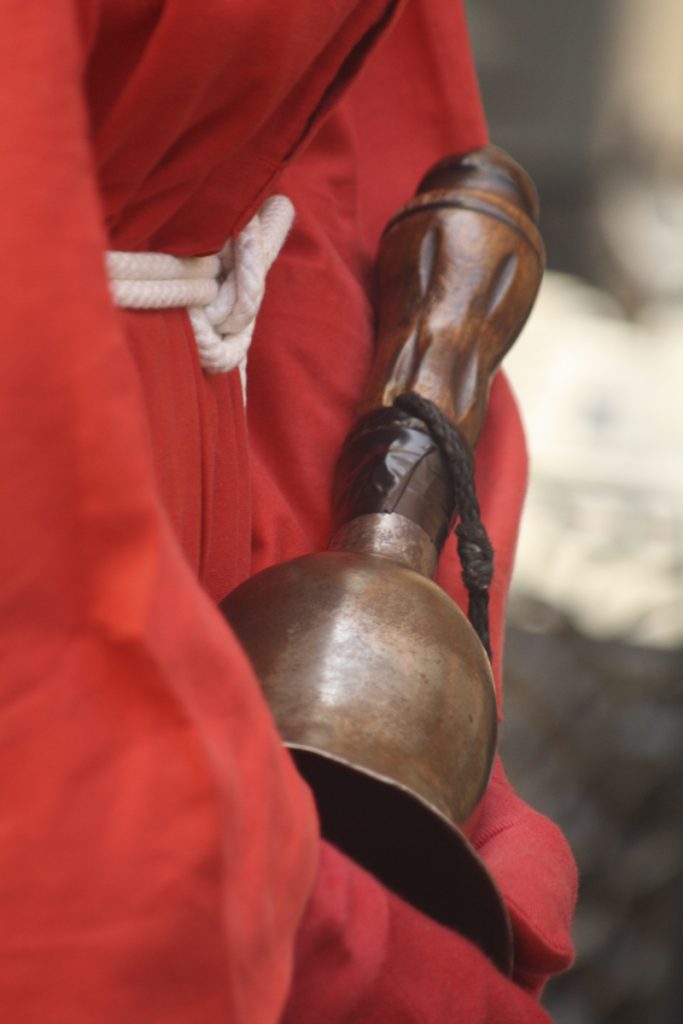
The procession opens with the regidor ringing a heavy iron bell. He wears a red gown and leads the penitents through the city. The mood is set: this is no joyful carnival, but a funeral procession.
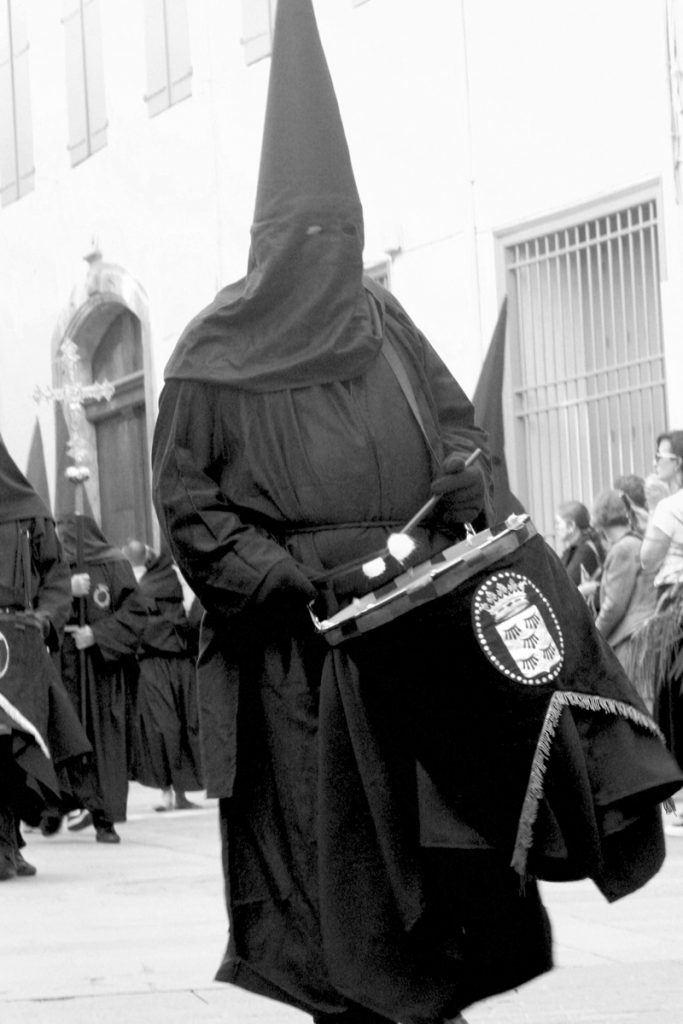
The regidor is followed by hooded drummers, beating a solemn rhythm on tambours muffled with black veils. The crowds lining the streets to watch are generally quiet and respectful of the muted ambiance.
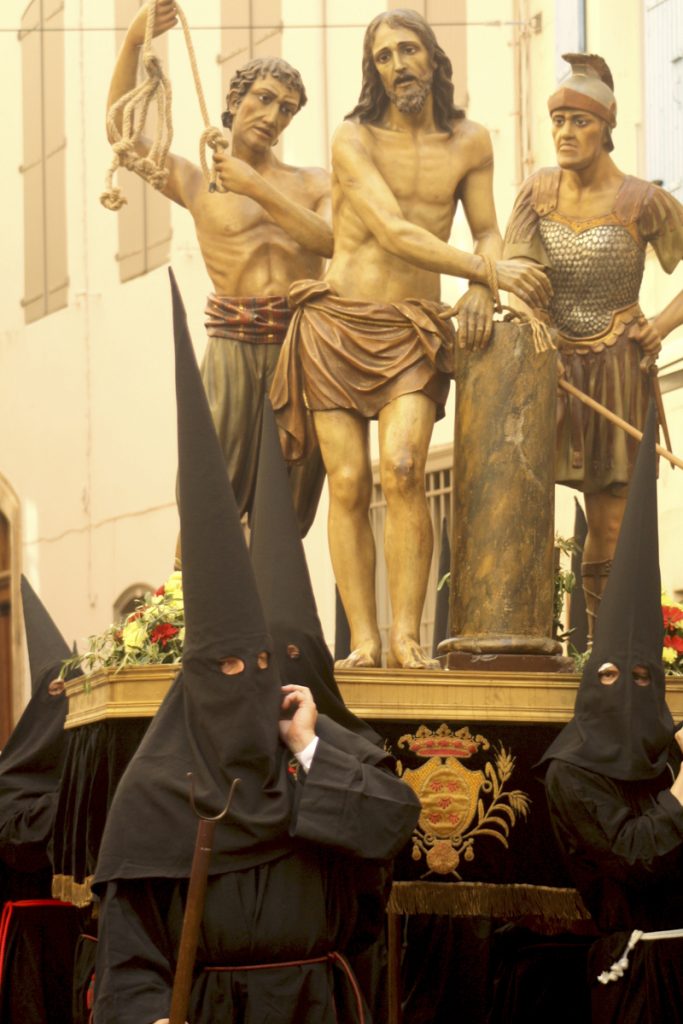
Penitents carry statues depicting the Stations of the Cross, known as misteris. These statues weigh up to 500 kilograms (1100 pounds). Carrying the misteris is seen to reflect the final journey of Christ carrying his own cross. Some penitents are bare-footed. The misteris in this image depicts the flagellation of Christ, and up until the 18th century, bare-backed penitents following it would practice self-flagellation for the duration of the three-hour procession. This practice, deemed far too vehement for Enlightenment France, was one of the reasons why Easter processions around the region were banned in the 18th century. The Procession of the Sanch was not fully reinstated in the city center of Perpignan until 1950.

Misteris depicting Christ on the Cross. It is a strange sight to see such statues bobbing above a mostly silent and subdued crowd. From a distance, it seems as if the statues themselves are walking.

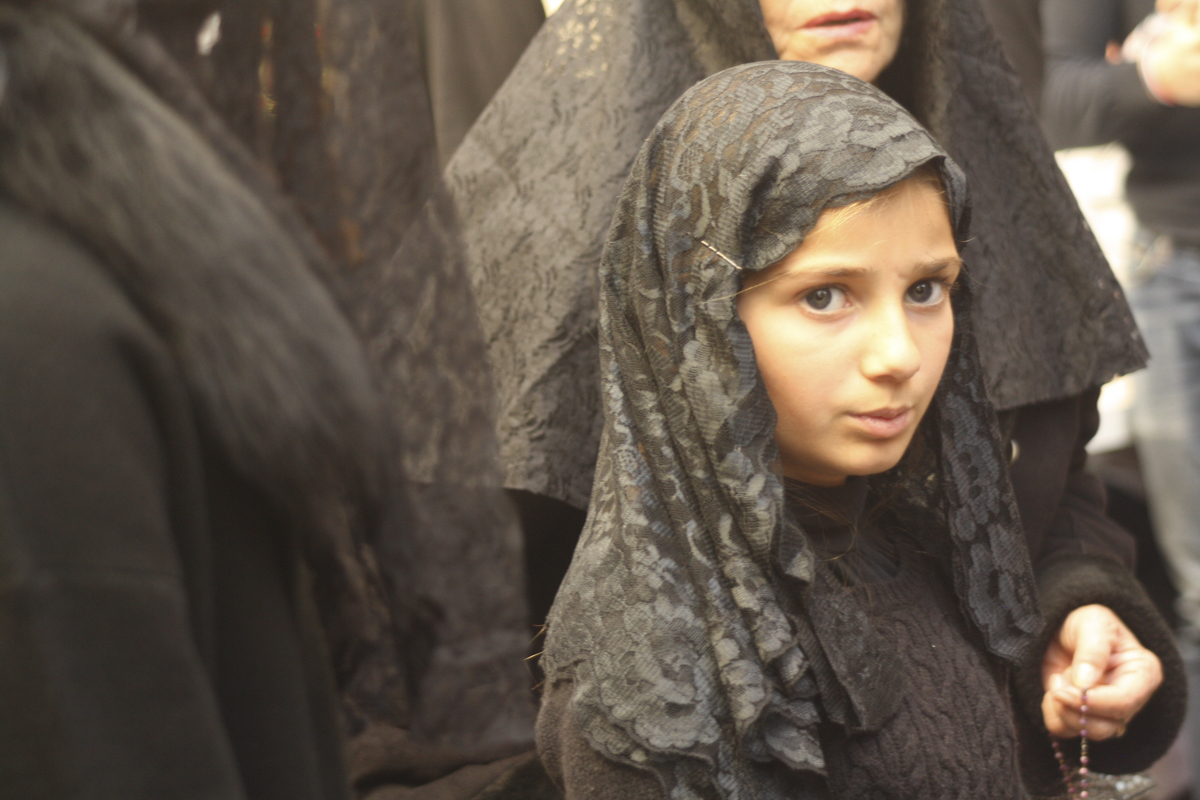
Women and girls do not wear caparutxes: they wear black and their heads are covered with mantilla veils as a symbol of mourning. Black gloves are also worn, and many women carry rosaries and wear gold crosses at their throat.

Penitent at rest. The misteris are decorated with fresh flowers, as for a funeral.
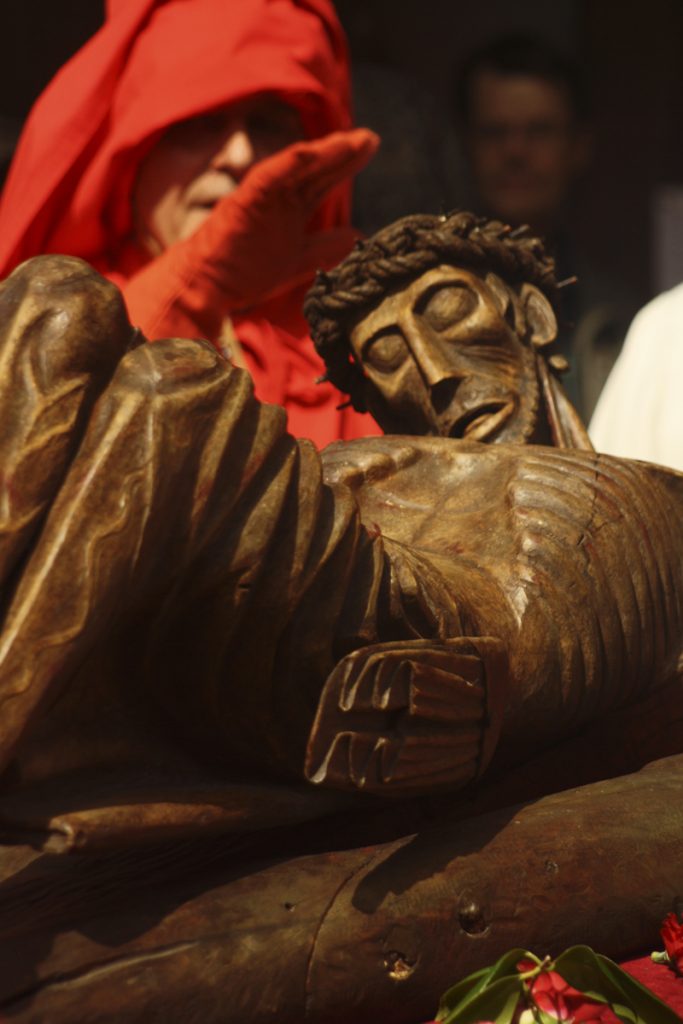
Displayed at the entrance of Perpignan’s cathedral is the “Dévot Christ” (“Pious Christ”). This carved wooden statue dates back to the late 13th or early 14th century and depicts with an unsettling realism the suffering caused by crucifixion. The original statue is kept in museum conditions in a chapel next to the cathedral, while a 20th-century copy is displayed for the Good Friday Procession.
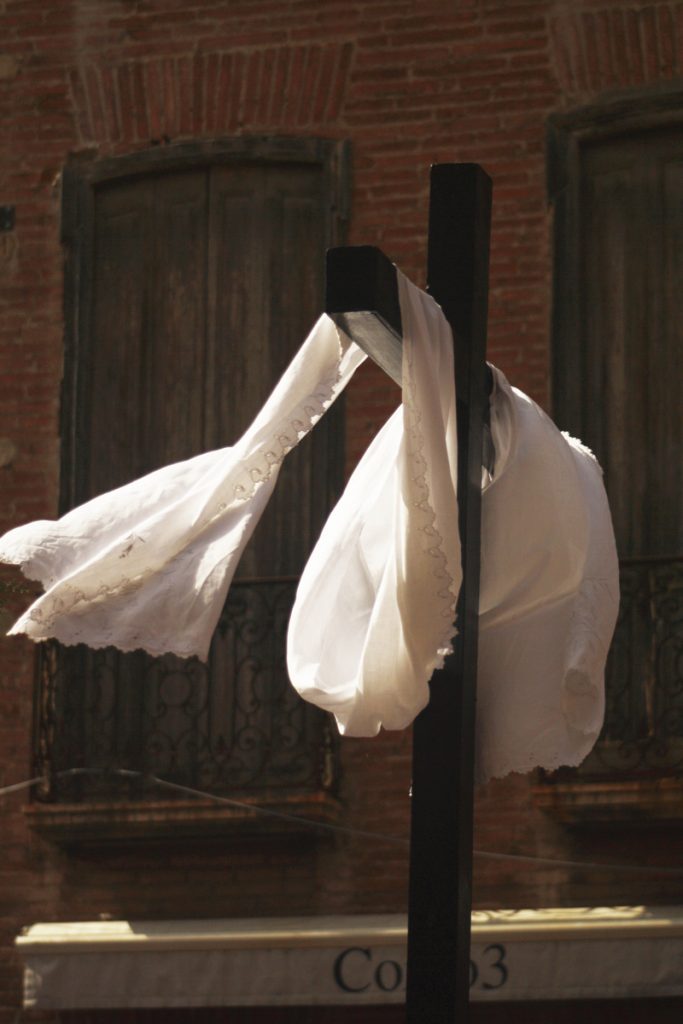
Some statues are dressed in fine cloths for the procession.
Eleanor Martindale is a self-employed online tutor, teaching English literature, creative writing, and French to young people all over the globe. Born and raised in the U.K., she has spent all her adult life in France and now lives in French Catalonia with her French-Catalan partner, Bernard Salles, a professional musician. She plays the violin in several musical groups that Bernard runs, and when she isn’t teaching, she is usually found working on one of their orchestral projects. In whatever spare time she can find, she enjoys photography, drawing and painting, and of course writing.

